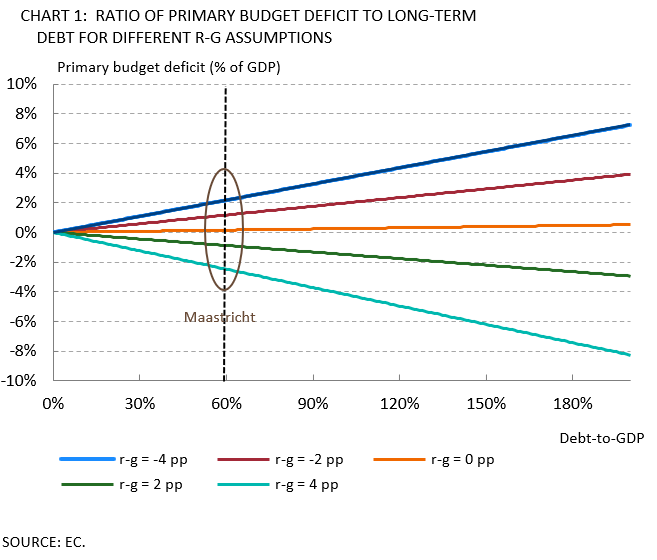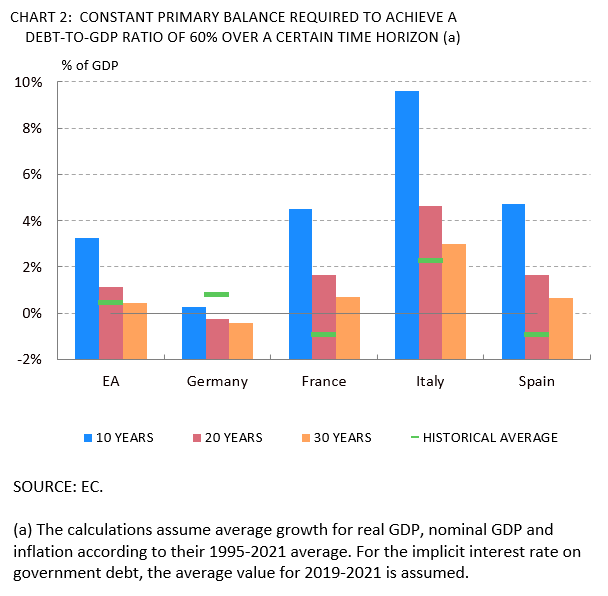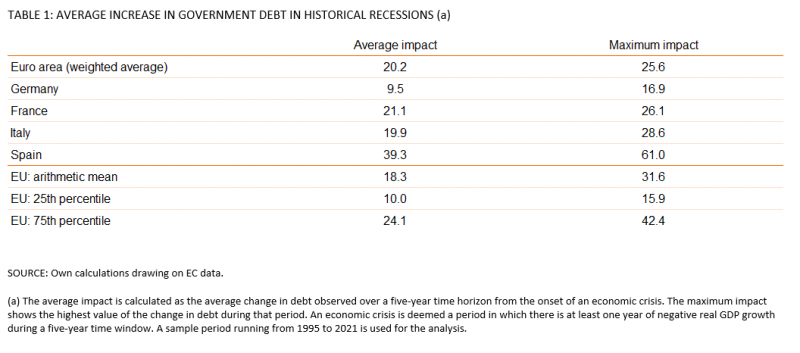References
Altavilla, C., M. Boucinha and Peydro, J. (2018). “Monetary policy and bank profitability in a low interest rate environment”. Economic Policy, Volume 33, Issue 96, pp. 531– 586.
Alloza, M., Andrés, J., Burriel, P., Kataryniuk, I., Pérez, J. J. and J. L. Vega (2021). “The reform of the European Union’s fiscal governance framework in a new macroeconomic environment”, Occasional Paper No 2121, Banco de España.
Andrés, J., P. Burriel and W. Shi (2020). “Debt sustainability and fiscal space in a heterogeneous Monetary Union: normal times vs the zero lower bound”, Working Paper No 2001, Banco de España.
Andrle, M., J. Bluedorn, L. Eyraud, T. Kinda, P. K. Brooks, G. Schwartz and A. Weber (2015). “Reforming Fiscal Governance in the European Union”, IMF Staff Discussion Note 15/09.
Arce, Ó., S. Hurtado and C. Thomas (2016). “Policy Spillovers and Synergies in a Monetary Union”, International Journal of Central Banking, 12(3), pp. 219-277.
Banco de España (2017). Chapter 4, “Fiscal policy in the euro area”, of Annual Report 2016.
Beetsma, R., N. Thygesen, A. Cugnasca, E. Orseau, P. Eliofotou and S. Santacroce (2018). “Reforming the EU fiscal framework: A proposal by the European Fiscal Board”, VoxEU.org, 26 October.
Bénassy-Quéré, A. et al. (2018). “Reconciling risk sharing with market discipline: A constructive approach to euro area reform”, CEPR Policy Insight No 91.
Brunila, A., M. Buti and D. Franco (eds.) (2001). The stability and growth pact: the architecture of fiscal policy in EMU, Springer.
Burriel, P., F. Martí and J. J. Pérez (2017). “The impact of unconventional monetary policy on euro area public finances”, Economic Bulletin, Banco de España.
Burriel, P., P. Chronis, M. Freier, S. Hauptmeier, L. Reiss and D. Stegarescu (2020). “A fiscal capacity for the euro area: lessons from existing fiscal-federal systems”, Occasional Paper No 2009, Banco de España.
Christiano, L., M. Eichenbaum and S. Rebelo (2011). “When Is the Government Spending Multiplier Large?”, Journal of Political Economy, 119(1), pp. 78–121.
European Commission (2020a). “Communication on Economic Governance Review – Report on the application of Regulations (EU) No 1173/2011, 1174/2011, 1175/2011, 1176/2011, 1177/2011, 472/2013 and 473/2013 and on the suitability of Council Directive 2011/85/EU”, Brussels.
European Fiscal Board (2020). Annual Report.
Eyraud, L., M. X. Debrun, A. Hodge, V. D. Lledo and M. C. A. Pattillo (2018). “Second-generation fiscal rules: Balancing simplicity, flexibility, and enforceability”, International Monetary Fund.
Fournier, J. (2016). “The positive effect of public investment on potential growth”, Working Paper No 1347, OECD Economics Department.
Galí, J. and R. Perotti (2003). “Fiscal Policy and Monetary Integration in Europe”, Economic Policy, October, pp. 533-572.
Gaspar, V. (2020). “Future of Fiscal Rules in the Euro Area”, Keynote speech at workshop on “Fiscal Rules in Europe: Design and Enforcement” organised by DG ECFIN. Brussels. Available at: https://www.imf.org/en/ News/Articles/2020/01/28/sp012820-vitor-gaspar-fiscal-rules-in-europe
González-Páramo, J. M. (2005). “The reform of the Stability and Growth Pact: an assessment”, speech at the conference on “New Perspectives on Fiscal Sustainability”, Frankfurt, 13 October.
Gordo, E. and I. Kataryniuk (2019). “Towards a more resilient euro area”, Economics and Business Letters, 8, pp. 106-114.
Hernández de Cos, P. (2020). “The European response to the COVID‑19 crisis”. Opening address – Fundación Internacional Olof Palme Conference, 13 November.
Hernández de Cos, P. and J. J. Pérez (2015). “¿De la reforma del pacto de estabilidad a la unión fiscal?”, Euro Yearbook 2015, pp. 209-222.
Kopits, G. (2001). “Fiscal Rules: Useful Policy Framework or Unnecessary Ornament?”, IMF Working Paper No 01/145.
Larch, M., E. Orseau, and W. van der Wielen (2021). “Do EU fiscal rules support or hinder counter-cyclical fiscal policy?”, Journal of International Money and Finance, 112, 102328.
Leeper, E. M., T. B. Walker and S. C. S. Yang (2010). “Government Investment and Fiscal Stimulus”, Journal of Monetary Economics, 57, pp. 1000-1012.
Martin, P., J. Pisani-Ferry and X. Ragot (2021). “Reforming the European Fiscal Framework”, Les notes du conseil d’analyse économique no 63.
Martínez Mongay, C., E. Feás, M. Otero Iglesias and F. Steinberg (2021). “Elementos de discusión para una reforma de la gobernanza de la Unión Económica y Monetaria”, Documento de Trabajo 4/2021, Real Instituto Elcano.
Rodríguez, L. and C. Cuerpo (2019). “Some elements for a revamped fiscal framework for Spain”, Working Papers, No 2018/03, Autoridad Independiente de Responsabilidad Fiscal.
Thygesen, N., R. Beetsma, M. Bordignon, X. Debrun, M. Szczurek, M. Larch, M. Busse, M. Gabrijelcic, L. Jankovics and S. Santacroce (2021). “High debt, low rates, and tail events: rules-based fiscal frameworks under stress”, VoxEU.org. Available at: https://voxeu.org/article/rules-based-fiscal-frameworks-under-stress











